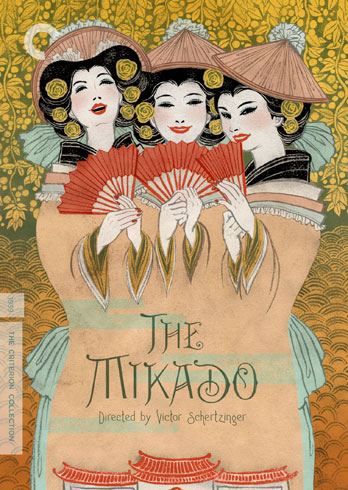
It surprises me that more Gilbert and Sullivan musicals haven't been adapted to film, but as Geoffrey O'Brien's liner notes to the new Criterion Blu-Ray of The Mikado inform us, this 1939 adaptation was the duo's first time on the silver screen, and there hasn't really been much more since. Mike Leigh's Topsy-Turvy, which is being released in conjunction with this under a separate cover [review], is the only comparable, substantial portrayal of Gilbert and Sullivan in cinema. Fittingly, Leigh's movie detailed the creation of the first-ever stage production of The Mikado and showed the backstage shenanigans at the Savoy, where the D'Oyly Carte Opera Company performed. Thus, the extended pedigree is intact: this late-'40s feature was an official production of the Opera Company, then run by Rupert D'Oyly Carte, son to Richard, the man who had commissioned The Mikado, who was one of the characters portrayed in Topsy-Turvy. This movie is part of the family business and a stepping stone between the truth and its fictional recreation. Sorting out the lineage is a plot bendy enough for Gilbert and Sullivan themselves!
This three-strip Technicolor production was directed by Victor Schertzinger, a composer who had also made a name for himself in the motion picture business (his next film was Road to Singapore
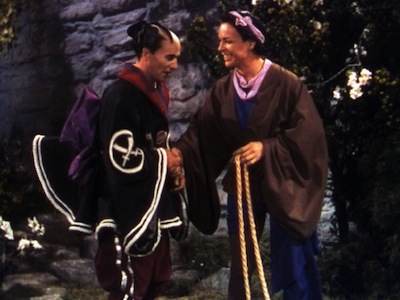
Given the strange, farcical plot of The Mikado, I think this may have been a good decision. Had the same story been undertaken using more standard film language, it would have seemed even more odd than it already does. As a Gilbert and Sullivan neophyte, I was amazed by the dark and twisted substance of the operetta's narrative. In a nutshell, the son of the Japanese Emperor is told he is going to marry an older woman of his father's court, the mustachioed Katisha (Constance Willis). Rather than submit, the boy (played by Kenny Baker) runs away. He hides out in a town called Titipu, where flirting is punishable by death. He poses as a minstrel and goes by the name Nanki-Poo and falls for the pretty Yum-Yum (Jean Colin) upon first seeing her.
Too bad for Nanki-Poo, but Yum-Yum is engaged to Ko-Ko (Martyn Green, a D'Oyly Carte alum), who himself has been condemned to execution for flirting with his fiancée. I don't know why Nanki-Poo gets away with his flirting, because even Ko-Ko is aware of it, but he does. The tale is a tangled mess, and I suppose the convolutions of this plot are best left where they are. Ko-Ko is given a reprieve under some weird statute that makes a man his own judge and executioner, and since he can't decapitate himself, he can stick around and marry Yum-Yum. Except then the Emperor, a.k.a. the Mikado (John Barclay), gets upset that the no one's head has been cut off for a while, so he tells Ko-Ko to get chopping or lose his job. Since Ko-Ko is the only man on death row in Titipu, he's back at square one, until he discovers Nanki-Poo is so distraught over Yum-Yum that he wants to kill himself. Ko-Ko makes him a deal that if he consents to be his stand-in on the block...well, things continue to grow more gnarled from there. Life and death and love and everything after hang in the balance.
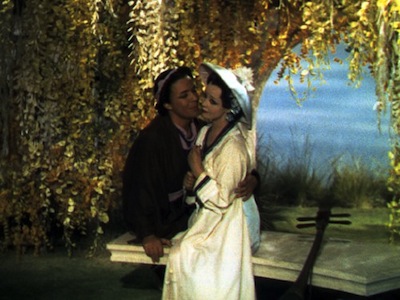
This kind of up-and-down storytelling, full of reversals and re-reversals and flips and flops, was what was referred to as the "topsy-turvy" style and, amusingly, was just what W.S. Gilbert was trying to get away from when he started out on his Japanese story. I can see why audiences liked it, however, it definitely keeps the action moving between songs, of which there are many, including famous numbers like "Three Little Maids from School." Most of the songs are jaunty and full of wordplay, a few are a little heavier, punctuating moments of romantic gravitas. Given how the story here never stops twisting, I'm a little surprised that The Mikado doesn't move faster. I can only imagine it with some kind of screwball Howard Hawks pacing; I guarantee no one watching would ever get bored if it had been run through at the same speed as His Girl Friday
Still, this presentation of The Mikado is one of those interesting historical excavations that has earned Criterion so many fans. Where else would I ever see the 1939 production of The Mikado, of all things, and where would I ever see it quite like this? The Blu-Ray package offers yet another remarkable restoration. The color image is astounding, full of beautiful texture and lovely variations of tone. There are multiple matte painting backdrops that have a soft, pastel-like hue that look just amazing in high-definition. Likewise, the mono soundtrack has been scrubbed to perfection. The music sounds perfect.
In addition to the silent film promoting the earlier D'Oyle Carte staging of The Mikado, the bonus section features scholarly interviews and a deleted scene, Ko-Ko's song "I've Got a Little List." It's theorized that it was either cut for the political jabs the number takes at recent newsworthy figures (it was updated to include Hitler, a lookalike of whom appears on screen in full Japanese costume) or a racial slur that is usually dropped in modern productions. It's interesting to note that Schertzinger takes advantage of recorded sound to make an audio joke during "List," which I assume was an invention for the cinema.
Tying this release of The Mikado to Topsy-Turvy is a new interview with Mike Leigh. Also, Criterion had New York-based artist Yuko Shimizu, perhaps best known for illustrating the covers to the literary-based comic book series The Unwritten, draw both covers. Shimizu's art definitely has a style fitting the material, and you should definitely take some time scanning the portfolio at yukoart.com. I am also including some of my favorite pieces below.
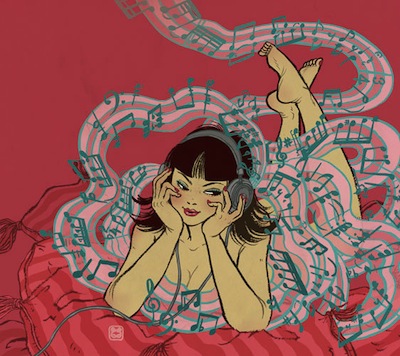
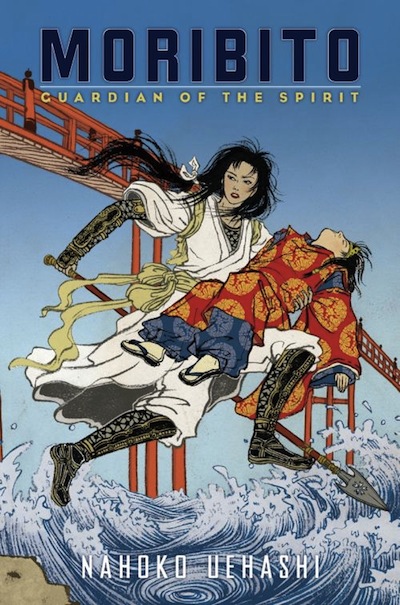
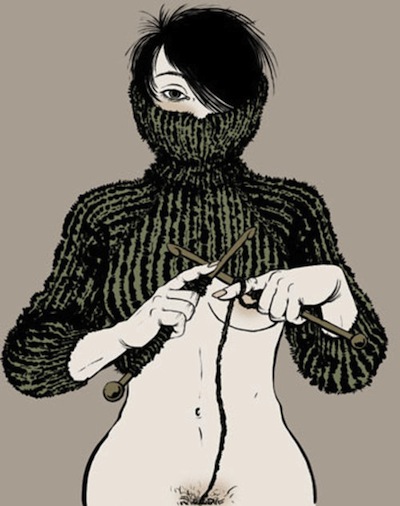
This disc was provided by the Criterion Collection for purposes of review.

1 comment:
I've seen this adaptation on a VHS tape--it's lovely to look at but kind of tedious, especially when compared with the Mikado excerpts in Topsy-Turvy.
There is a wonderfully enjoyable "updated" Mikado with Eric Idle and the English National Opera (in a Jonathan Miller production) that was available on DVD.
Post a Comment